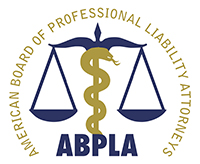Feet are very complex structures, and quite literally they are our foundation. The practice of podiatric medicine is a very specialized branch of medicine dealing only with the care of the feet and ankles Failure to properly diagnose and treat conditions of the feet can lead to lifestyle alterations as profound as permanently losing the ability to walk and to participate in common activities of daily living or leisure activities, loss of ability to perform tasks required for employment, or even a loss of independence.
Here at Mandell, Boisclair & Mandell, Ltd we have the knowledge and experience to assess the merits of Rhode Island Podiatric Negligence Cases. Podiatric surgery is an evolving specialty, and podiatrists must constantly update their knowledge of the most current recommended surgical techniques. We have successfully litigated cases in which a Rhode Island Podiatrist failed to perform surgery properly or failed to recognize that a patient‘s particular surgical needs required referral to a different surgeon with specific surgical experience beyond their own.
For example:
- Our client developed pain under the “ball” of her foot (at the base of the great toe). She went to a podiatrist who told her that her pain was the result of a fracture of one of two small bones (the “sesamoid” bones) at the base of the great toe. Our client followed the podiatrist’s suggestion of doing surgery to remove the fractured bone. She was much worse off after the surgery and is now told she will likely always have problems with prolonged standing or walking.
- These two small “sesamoid bones” are very important to the proper function of the great toe (and therefore important to the function of the entire foot) as they are a critical connection point for several essential tendons. During our investigation of the matter we learned that our client’s poor post-operative outcome was due to the podiatrist having removed both sesamoid bones. Our podiatry experts testified at trial that removal of both of these bones was negligent, and the podiatrist also erred by not properly informing our client of exactly what surgery he was going to do, or the risks of removing these bones. The defendant podiatrist testified that he had to remove both bones because they were fused together, but our expert bone-pathologist testified that there was no evidence to support this. The podiatrist also had relied on x-rays that were 1 ½ years old in doing the surgery. The jury decided the case in our client’s favor.



























